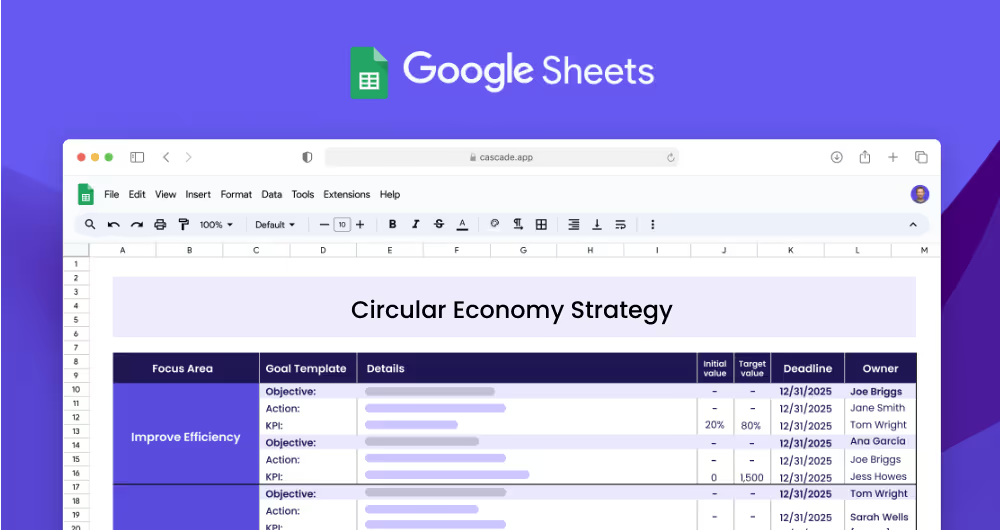A Circular Economy Strategy is a plan designed to help organizations adopt sustainable practices that promote circular economy principles. It typically focuses on minimizing waste, optimizing resource use, and fostering sustainable economic systems. This strategy template is a comprehensive guide to help organizations achieve their sustainability goals.
Each focus area has its own objectives, projects, and KPIs to ensure that the strategy is comprehensive and effective.
This Circular Economy Strategy template is designed for organizations of all sizes that are looking to develop plans to promote circular economy principles. It can be used by teams, or entire organizations to build a roadmap to help them reduce waste, optimize resource use, and foster sustainable economic systems.
The Circular Economy Strategy template starts by having you identify your key focus areas. These should be broad topics that define the scope of your sustainability goals. Examples of focus areas could include Minimizing Waste, Optimizing Resource Use, and Fostering Sustainable Economic Systems.
Next, you should list the objectives that you want to achieve under each focus area. These should be specific and actionable goals that you can work towards. Examples of some objectives for the focus area of Minimize Waste could be: Reduce Resource Use, and Increase Recycling.
Once you have identified your objectives, it's important to set measurable targets (KPIs) to track your progress. KPIs should have a numerical value that you can measure against, such as how much single-use plastic you're purchasing or how much energy you're using. This will help you assess how successful your strategy is and make changes as needed. An example of a KPI for the focus area of Minimize Waste could be: Decrease single-use plastic purchase by 50%.
Finally, you need to create projects that will help you achieve your KPIs. These projects should be related to the objective you are trying to accomplish and should be actionable steps that can be taken to help you reach your goals. For example, if you are trying to reduce energy usage, one project could be to switch to renewable energy sources.
If you’re ready to advance your strategy and harness greater outcomes, Cascade Strategy Execution Software is your ideal solution. It transcends traditional spreadsheets by providing a robust, user-friendly platform with tools designed for real-time updates, centralized collaboration, and automated reporting. This enhances strategic visibility and operational efficiency, allowing teams to adapt swiftly and stay connected on all fronts. Explore a new dimension of strategy management with Cascade’s visual dashboards and integrated execution tools. Sign-up for free or book a demo with one of our strategy experts to revolutionize your strategy execution.


